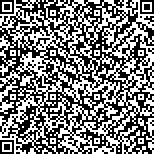陈静,张红波,张长国,张强春,周胜华,杨君祥,冯耀耀,梅小萍,缪三龙.高频与低频重复经颅磁刺激治疗帕金森病抑郁的疗效观察[J].中华物理医学与康复杂志,2015,37(11):838-841
扫码阅读全文

|
| 高频与低频重复经颅磁刺激治疗帕金森病抑郁的疗效观察 |
|
| |
| DOI: |
| 中文关键词: 帕金森病 经颅磁刺激 低频 高频 抑郁症状 |
| 英文关键词: Parkinson′s disease Repetitive transcranial magnetic stimulation Low-frequency High-frequency Depressive symptoms |
| 基金项目:浙江省湖州市科技局一般科研社会发展项目(2012YSB14) |
|
| 摘要点击次数: 3458 |
| 全文下载次数: 4827 |
| 中文摘要: |
| 目的观察低频与高频重复经颅磁刺激(rTMS)治疗帕金森病(PD)患者抑郁症状的疗效及安全性。 方法采用随机数字表法将60例PD伴抑郁症状患者分为低频组、高频组及假刺激组。低频组、高频组患者分别给予低频1Hz、高频5Hz rTMS治疗,假刺激组患者则于相同时间点给予假rTMS治疗。于治疗前、治疗10d及治疗结束1个月后分别采用汉密尔顿抑郁量表(HAMD)对各组患者抑郁症状进行评定。 结果治疗10d后低频组患者HAMD分值由(13.67±8.15)分降至(10.05±4.83)分,高频组患者HAMD分值由(14.76±8.69)分降至(8.81±4.21)分,两组患者HAMD分值均较治疗前明显下降(P<0.05);低频组治疗10d后其HAMD分值较假刺激组明显下降(P<0.05),治疗结束1个月后两组患者HAMD分值组间差异无统计学意义(P>0.05);高频组患者治疗10d及治疗结束1个月后其HAMD分值均显著低于假刺激组水平(P<0.05)。低频组及高频组患者治疗后其HAMD量表焦虑/躯体化因子(F1)、阻滞因子(F2)、睡眠障碍因子(F3)分值均显著降低(P<0.05),并且高频组认识障碍因子(F4)、绝望感因子(F5)分值也较治疗前明显降低(P<0.05)。 结论低频及高频rTMS治疗均能有效改善PD伴随的抑郁症状,且安全性较好,低频及高频rTMS对PD患者焦虑/躯体化、阻滞、睡眠障碍的改善作用均较显著,高频rTMS治疗可能较低频rTMS治疗作用更强、更持久。 |
| 英文摘要: |
| Objective To observe the efficacy and safety of low frequency and high frequency repetitive transcranial magnetic stimulation (rTMS) in the treatment of depressive symptoms in patients with Parkinson′s disease (PD). MethodsTotally 60 Patients with PD and depressive symptoms were divided into a low frequency, a high frequency group and a sham group using a random number table. The low frequency and high frequency group were treated with low frequency rTMS (1 Hz) and high frequency rTMS (5 Hz), respectively, while the sham group received sham rTMS at the same time. Hamilton Depression Scale (HAMD) was used to evaluate the depressive symptoms in all groups before treatment, 10 days and 1 month after the treatment. Results The average score of HAMD in the low frequency group decreased significantly from (13.67±8.15) to (10.05±4.83) 10 days after the treatment, and that of the high frequency group also decreased significantly from (14.76±8.69) to (8.81±4.21). The average HAMD score of the low frequency group decreased significantly compared with the sham stimulation group after treatment for 10 days, but showed no significant difference from the latter after 1 month of treatment (P>0.05). After 10 days and 1 months of the treatment, the average HAMD scores of the high frequency group were (8.81±4.21) and (9.43±4.44), which were both significantly lower than that of sham stimulation group at the same time points (P<0.05). The average HAMD scores of anxiety/somatization factor, retardation factor, sleep disturbance factor lowered significantly in the low frequency and high frequency groups after the treatment. The average score of cognitive impairment factor and the sense of despair factor in the high frequency group were also decreased significantly after the treatment (P<0.05). ConclusionBoth low frequency and high frequency rTMS can relieve the symptoms of depression in the PD patients with good safety. Both low- and high- frequency rTMS can significantly improve the symptoms of anxiety/somatization, retardation and sleep disturbance, but the high-frequency rTMS treatment may be more effective and lasting. |
|
查看全文
查看/发表评论 下载PDF阅读器 |
| 关闭 |